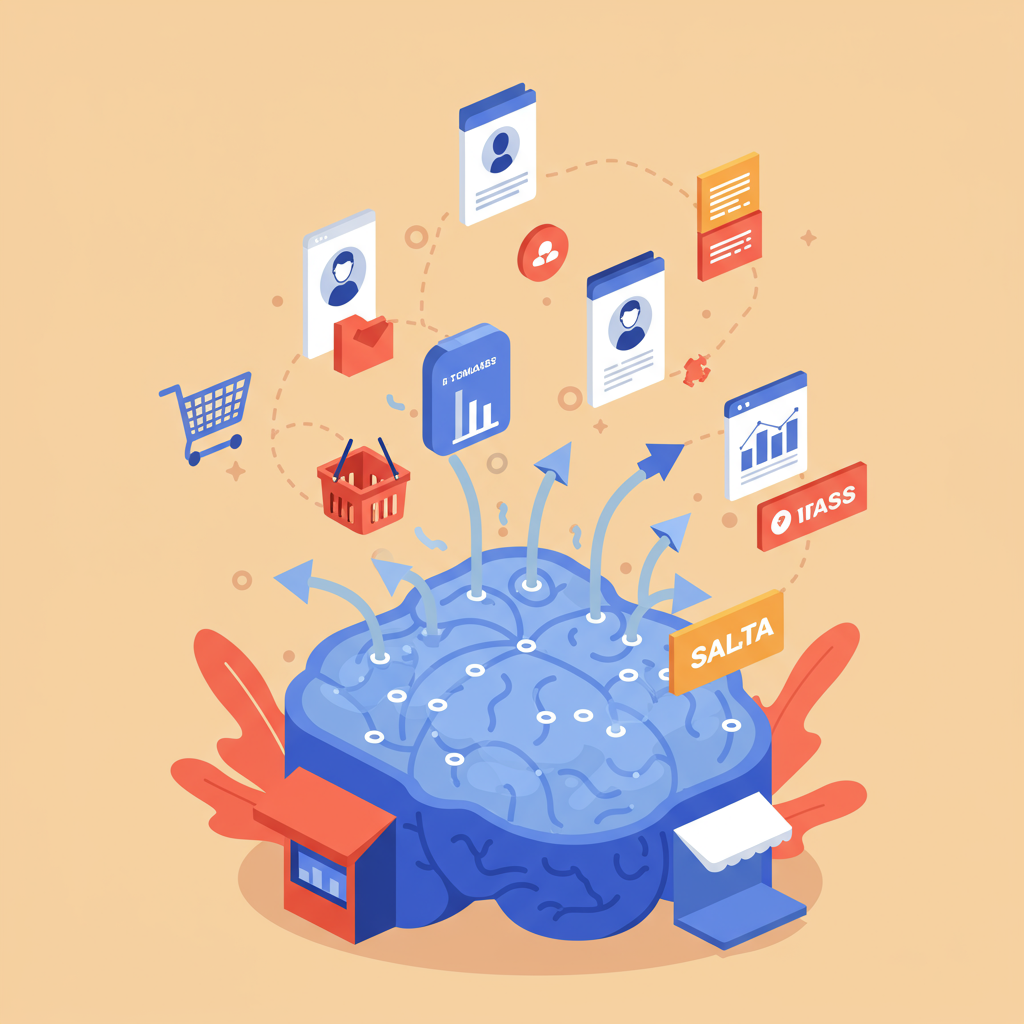Anticipate Customer Needs and Boost Sales with AI Insights
As a Shopify merchant, I’m constantly looking for ways to get ahead, to not just react to trends but to anticipate them. The e-commerce landscape is incredibly competitive, and simply having a great product isn’t always enough anymore.
This is where predictive analytics steps in, offering a powerful lens into the future of our businesses. It’s a concept that has truly transformed how I approach my Shopify store, moving me from guesswork to data-driven foresight.
Imagine knowing what your customers will want before they even realize it, or understanding which products will fly off the shelves next season. This isn’t science fiction; it’s the practical application of AI insights through predictive analytics.
For me, it’s about leveraging the vast amounts of data our Shopify stores generate every single day. Every click, every purchase, every abandoned cart – it’s all valuable information waiting to be analyzed.
So, what exactly is predictive analytics in the context of our Shopify stores? At its core, it’s the use of data, statistical algorithms, and machine learning techniques to identify the likelihood of future outcomes based on historical data.
It’s not just about reporting what happened; it’s about forecasting what *will* happen. This shift from descriptive to predictive analysis is a game-changer for any e-commerce business.
Artificial intelligence (AI) is the engine that powers these predictions. AI algorithms can sift through massive datasets, identify complex patterns that human analysts might miss, and then build models to predict future behaviors or trends with remarkable accuracy.
The beauty of this for us, the Shopify merchants, is that it allows us to be proactive rather than reactive. We can make informed decisions about everything from marketing to inventory, rather than just responding to events as they unfold.
One of the most immediate benefits I’ve experienced is in customer segmentation. Predictive analytics helps me identify my most valuable customers, those likely to make repeat purchases, or even those at risk of churning.
By understanding these segments, I can tailor my marketing messages and offers with incredible precision. It’s about speaking directly to the needs and potential future actions of each customer group.
This leads directly into personalized recommendations, which are crucial for enhancing the customer experience. If a customer buys a specific type of product, predictive models can suggest complementary items they’re highly likely to purchase next.
Think of it like a highly intelligent sales assistant who knows your customer’s preferences intimately. This not only boosts average order value but also makes the shopping experience feel more intuitive and enjoyable for the customer.
Inventory optimization is another area where predictive analytics has been a lifesaver for my store. Overstocking ties up capital and leads to markdowns, while understocking means lost sales and frustrated customers.
By analyzing past sales data, seasonal trends, and even external factors like holidays or social media buzz, predictive models can forecast demand for specific products, helping me order just the right amount at the right time.
Churn prediction is perhaps one of the most powerful applications. Identifying customers who are likely to stop buying from your store *before* they actually do allows you to intervene with targeted retention strategies.
This could be a personalized discount, a special offer, or even a simple check-in email. Retaining an existing customer is almost always more cost-effective than acquiring a new one, and predictive analytics makes this proactive retention possible.
Dynamic pricing is another fascinating application. Based on demand, competitor pricing, and even individual customer behavior, predictive models can suggest optimal pricing strategies to maximize revenue and profit margins.
This isn’t about arbitrary price changes; it’s about data-driven adjustments that respond to market conditions and customer willingness to pay, all in real-time or near real-time.
Optimizing marketing campaigns becomes significantly easier and more effective. Instead of broad-brush campaigns, I can use predictive insights to target specific customer segments with the offers they are most likely to respond to.
This means higher conversion rates, lower customer acquisition costs, and a much better return on investment for my marketing spend. It’s about precision marketing.
Even fraud detection can be enhanced. Predictive models can analyze transaction patterns and identify anomalies that might indicate fraudulent activity, protecting both your business and your customers.
So, how do we, as Shopify merchants, start leveraging these powerful capabilities? The good news is that Shopify itself is a rich source of data, and there are many tools available.
The first step is to understand the data you already have within your Shopify admin – customer history, order details, product performance, traffic sources. This is your foundation.
Next, explore the Shopify App Store. Many apps are emerging that offer predictive analytics capabilities, from advanced reporting to AI-powered recommendation engines and inventory forecasting tools.
It’s crucial to ensure your data is clean and accurate. “Garbage in, garbage out” applies strongly here. Invest time in data hygiene to get the most reliable predictions.
What do you think about these insights? I’m curious to hear your thoughts on how predictive analytics could transform your Shopify store and what challenges you foresee in implementing it.
Start small, perhaps by focusing on one area like personalized recommendations or inventory forecasting, and then expand as you gain confidence and see results.
The future of e-commerce is undoubtedly data-driven, and predictive analytics is at the forefront of this evolution. It’s no longer a luxury but a necessity for sustained growth and competitive advantage.
By embracing AI insights, we can move beyond simply reacting to our market and truly begin to anticipate, innovate, and lead. It’s about empowering our Shopify businesses to thrive in an ever-changing digital world.






